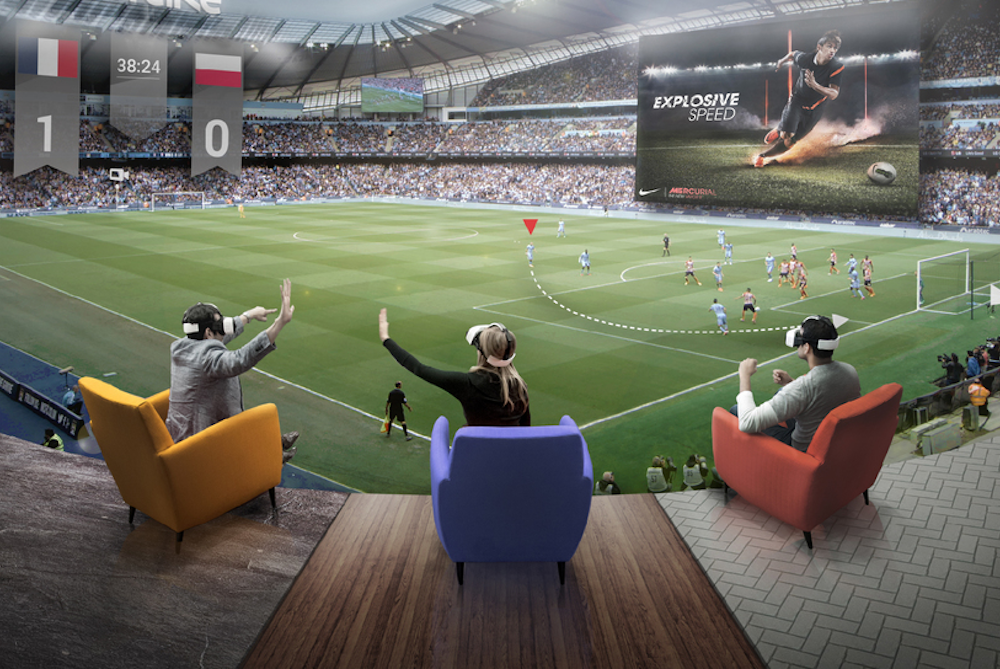
Immersive Play: Virtual Reality Redefining Sports Simulations
Virtual reality (VR) is revolutionizing the way we experience sports, introducing a new era of immersive play through virtual reality sports simulations. This technology goes beyond traditional gaming, offering a dynamic and realistic experience that transports players into the heart of their favorite sports. Let’s explore the transformative impact of virtual reality on sports simulations and how it’s reshaping the gaming landscape.
Entering a New Dimension: The Essence of Virtual Reality in Sports
Virtual reality sports simulations bring a sense of realism and immersion that transcends conventional gaming experiences. Through VR headsets and motion controllers, players find themselves stepping into a new dimension where they can interact with the virtual sports environment. The fusion of cutting-edge technology and sports simulations creates a captivating and lifelike experience.
From the Couch to the Court: Breaking Physical Boundaries
One of the key advantages of virtual reality sports simulations is the ability to break physical boundaries. Players can go beyond the constraints of their living rooms and virtually step onto iconic sports arenas or challenging landscapes. Whether it’s a basketball court, soccer field, or golf course, virtual reality allows users to explore and engage in sports experiences without leaving the comfort of their homes.
Realistic Gameplay and Dynamic Interactions: The VR Advantage
Virtual reality adds a layer of realism to sports simulations, providing users with a sense of presence and dynamic interactions. From realistic ball physics to lifelike opponent movements, VR sports simulations strive to replicate the nuances of actual sports gameplay. This level of authenticity enhances the gaming experience, making it more engaging and enjoyable for players.
Immersive Training and Skill Development: Beyond Entertainment
Virtual reality sports simulations extend beyond entertainment, serving as valuable tools for training and skill development. Athletes can use VR to simulate game scenarios, practice techniques, and enhance their decision-making skills in a controlled virtual environment. This dual-purpose functionality makes VR an invaluable asset for both casual gamers and aspiring athletes.
Enhancing Fan Engagement: A New Dimension for Spectators
Virtual reality doesn’t just cater to players; it also enhances the experience for sports fans. Through VR, spectators can immerse themselves in virtual stadiums, watching games from different perspectives as if they were physically present. This technology opens up new possibilities for fan engagement, creating a more interactive and personalized viewing experience.
Challenges and Opportunities: Navigating the Virtual Frontier
While virtual reality sports simulations offer a host of benefits, they also present challenges and opportunities for the gaming industry. Developers navigate the complexities of creating realistic graphics, seamless gameplay, and addressing potential motion sickness concerns. However, these challenges spark innovation, driving the continuous improvement of virtual reality sports simulations.
Accessibility and Inclusivity: Bringing Sports to Everyone
Virtual reality sports simulations contribute to the accessibility and inclusivity of sports experiences. Individuals with physical limitations or those unable to attend live events can still participate in virtual sports, fostering a sense of inclusion. VR technology opens up a world of possibilities, ensuring that sports enjoyment is not limited by physical barriers.
The Social Aspect of VR Gaming: Connecting Players Worldwide
Beyond the solitary nature of traditional gaming, virtual reality sports simulations introduce a social element. Multiplayer modes and online communities enable players from around the world to connect, compete, and share their virtual sports experiences. This social dimension enhances the sense of community within the gaming sphere.
Future Trends and Innovations: What Lies Ahead
As virtual reality sports simulations continue to evolve, the future promises even more immersive experiences. Innovations such as haptic feedback technology, improved graphics, and enhanced interactivity are on the horizon. The ongoing development of VR hardware and software ensures a continual push toward creating increasingly lifelike and enjoyable sports simulations.
Step into the Virtual Arena: Explore Virtual Reality Sports Simulations
To step into the virtual arena and explore the transformative world of virtual reality sports simulations, visit Virtual reality sports simulations. Whether you’re a sports enthusiast, a casual gamer, or someone looking to experience the next frontier of gaming, virtual reality offers a thrilling and immersive journey into the world of sports simulations.



